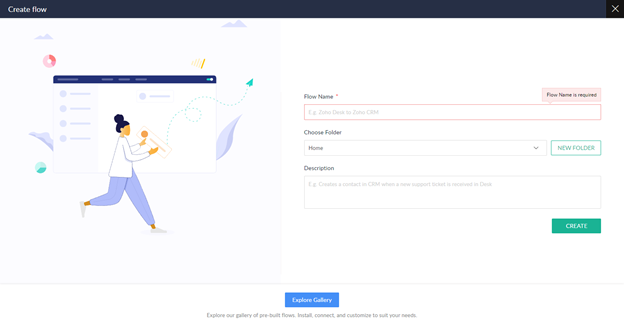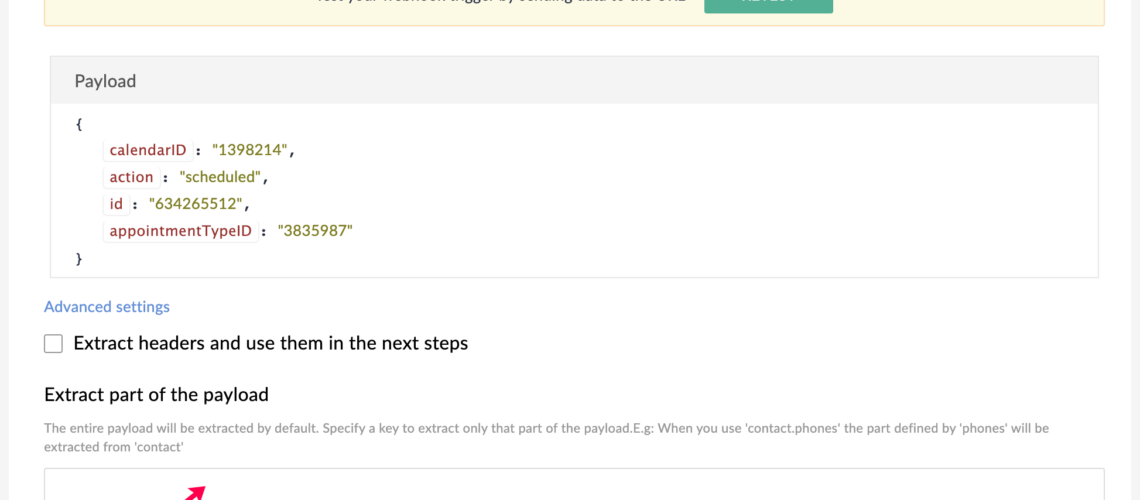Introduction
We’ll discuss a common Zoho flow that triggers a webhook and sends data to the CRM.
- Automate operations inside your company.
- Triggers can be set up by users.
- The transport of data is immediate.
- Automation is frequently smooth and effortless.
What is a webhook and use cases?
Creating a flow based on a webhook, a standard method for sending data between applications. It is often used for simple integrations or when a system lacks authentication capabilities for storing client secrets or IDs.
Webhooks can be simpler than building an entire API integration, as the external application can post a standard webhook and Zoho can handle the rest using ZohoFlow.
Creating a flow
The example webhook to lead is created and set up using a webhook URL. The webhook URL asks for the payload type, which is typically JSON. The data is sent to the webhook URL, which looks like a standard URL with a key. However, this is not as secure as integrating OAuth directly into Zoho.
This is suitable for simple incoming leads from sources. The webhook URL is not as secure as a proper OAuth integration, but it is suitable for testing the webhook and feed parameters.

Using Postman
Postman is a popular tool for testing web hooks. It allows users to send data to web hooks, which can be done in various tools, including the system or a coding environment. The user can define a standard JSON payload, such as first and last names, email, and phone, for data like lead data.
This can be useful for real estate agents, professional services, or clients who want to send referrals through a web form. The payload includes parameters and data. The user must test the end point by clicking twice on the URL and passing in the data. This integration can be used for various purposes, such as real estate agents, professional services, and referral partners.

Testing Endpoints
The endpoint is ready to be tested, and the data is sent through the app. The test ensures that the data comes through correctly, identifying any missed parameters or complex data structures. This allows for adjustments in formatting and allows for the creation of a lead. Once the payload is successfully sent, the next step is to create a lead, ensuring that the data is sent correctly and accurately.
Building the webhook
The integration of Zoho Flow with CRM and how to check if a contact already exists as a contact. They suggest using the email to determine if the contact exists and then adding a branch to the flow.
The webhook is sent to flow, where it will be read into first, last, email, and phone. The contact ID is chosen as it will never be empty for a contact that exists. If the contact does not exist, two branches are added to give them both names.
In the case where a contact already exists, the author can decide what to do in these two different cases: create a task associated with the contact or send an email to the contact owner. For brevity, the path where a contact does not exist is shown.
To the Zoho CRM section and can create or update a lead. There are multiple ways to get there, such as creating a module entry or creating or updating a lead. The create and update a lead option uses the email natively to determine if it needs to create or update the record.
Adding fields like last name and first name to specific fields, such as phone and email. It is important to keep an eye on when doing this, as it is a common mistake that people make. When trying to create a record or create a lead, be careful not to accidentally pull the first name from the contact fetch because it’s empty.
Additionally, dropping hard-coded or text parameters that aren’t going to reference the webhook. For example, if all leads coming through the system are from external referrals, they could code in the lead source instead of needing it to be part of the contact.
The importance of using ZohoFlow and CRM to ensure proper data integration and avoid duplication. By carefully mapping and adding fields to specific fields, users can ensure their data is accurate and relevant to their business needs.

Webhook history
The use of webhooks in Zoho, a platform for transferring data from external sources into Zoho. The flow then decided that the contact did not exist, based on the criteria of contact ID being null. The lead was created, and the data was mapped to the fields in the CRM.
Upon refreshing the Zoho flow a new lead was found, which included all the data included in the flow. This led to the successful transfer of the data to the CRM. Webhooks are a useful and easy-to-use way to send data from outside of Zoho into Zoho. However, they require real OAuth integration and developer console access.
Webhooks are a quick and easy way to send data from external sources into Zoho, allowing users to determine its use in their environment.




